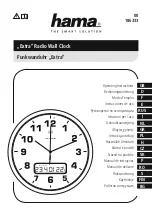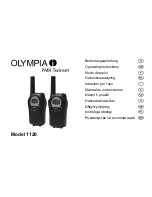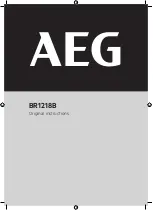
4: Radio Programming
4-28
PRC1099A-MSOP
If a reply is not received from the called station, a slow error alarm is
heard in the handset; the radio automatically returns to normal operation.
Calling Process
This section explains the differences in the types of calls that the TA/TC
option offers.
TransAdapt or
Transcall on a
Fixed Channel
This type of call is referred to as Selective Calling. The transmit station is
stationary on any channel (other then 9, if scan is on) while the receive station
is either stationary on the same channel as the transmit station, or in receive
scan (channel 9, scan on). After placing a call from the transmit station, the
receive station may reply if the proper code is used. If the receive station
replies, a fast call alarm sounds in the handset, and
CALL
is displayed on both
transceivers indicating the call is completed. If a reply is not received, a slow
error alarm sounds in the handset, and the radio automatically returns to
normal operation.
TransAdapt with
Channel
Scanning
The transmit station starts in receive scan (channel 9, scan on). When a call is
initiated from the transmit station with a proper code, the transmit call is timed
to allow the destination receiver to scan through all nine channels ensuring the
receiver and transmitter can synchronize on the same channel.
Once the receiving station receives the call on the first usable channel, the
transmitting radio is notified to stop calling and scanning and to link. A fast
call alarm sounds in the handset, and
CALL
is displayed on both transceivers
indicating the call is completed. If no reply is received, a slow error alarm
sounds in the handset, and the radio automatically returns to normal operation.
Transcall with
Channel
Scanning
The transmit station starts in receive scan (channel 9, scan on). When a call is
initiated from the transmit station with a proper code, the transmit call is timed
to allow the receiver to scan through all nine channels ensuring the receiver
and transmitter are on the same channel. Once the receiving station gets the
call, it begins synchronized polling and grades the link quality of each
channel. Polling stops when all channels are graded.
The data from the polling process helps the receiving station determine which
channel is the best for communication and that channel is selected for linking
with the transmit station. In the mean time, the transmitting station continues
scanning until it is notified of the receiving station’s channel choice at which
point it stops scanning and remains on that channel. A fast call alarm sounds
in the handset, both radios link and
CALL
is displayed on both transceivers
indicating the call is completed. If no reply is received, a slow error alarm
sounds in the handset, and the radio automatically returns to normal operation.
















































